Dying wish
Few terminally ill Australians get to spend their final days at home. When it happens, it can be the greatest gift of love.
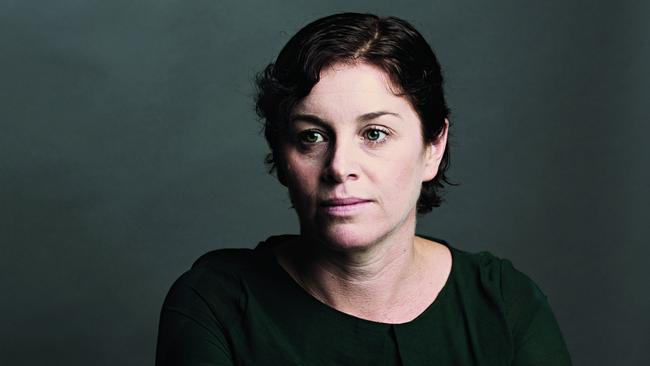
It begins with the lighting of a candle, the bright tone of a ringing bell, and a card plucked from a deck of Buddhist prayer cards then read aloud: “Now may every living thing, young or old, weak or strong, living near or far, known or unknown, living or departed, or yet unborn – may every living thing be full of bliss.”
On this Monday morning in a northern suburb of Brisbane, six clinical nurses and support staff are gathered around a table inside a building known as Karuna House. Its walls are painted pale blue, its ceilings are high, and pinned to a corkboard are dozens of booklets gathered from funerals and memorial services. These are some of the organisation’s recently deceased clients, for the nature of Karuna’s work is to offer support to people who are terminally ill, providing in-home palliative care services to about 50 families at a time. Written in red on a whiteboard is the number four – the tally of clients who died the previous week in mid-November; the same as the week before.
In a corner of the room beside an open window sits Camille Doyle, 40, who listens intently while making handwritten notes on a printed page that shows her clients’ names, addresses and current assessment: “stable”, “unstable”, “deteriorating”, or “terminal”. This fourth stage is followed by bereavement, which involves caring for those left behind. Today Camille will visit four homes; by now, she knows these people intimately and the routes to their houses so well that she doesn’t need a map.
On a bushy block in Samford Valley, 25km north-west of Brisbane CBD, sits a large timber house owned by a married couple of 49 years. When Camille knocks on the door at 11.30am, she is greeted by Sandra Huelsmann, a 73-year-old grandmother who wears pearl earrings and a silver heart necklace. “Hello, Millie,” says Sandra, smiling. They hug, and Sandra welcomes the nurse into a home she has visited regularly for the past six months, an unusually long relationship for Karuna. The longer duration reflects the complex nature of this particular palliative situation.
On an adjustable bed in a room towards the front of the house is Tony Huelsmann, a retired dancer, choreographer and dance instructor whose skills were once in high demand at schools throughout Melbourne and Brisbane. Sandra was one of his dance students. He was 30 when they met, seven years older than her, and it was love at first sight.
Born in Germany, Tony has spent much of his life in Australia. Now 80, he is dying from complications associated with several internal and external cancers, including a rash of angry red squamous cell carcinomas that have colonised the skin of his swollen upper thighs. These painful sores require daily dressings, performed by a personal care worker, while Karuna’s rotating roster of nurses help with symptom management, bed-baths, toileting and bedding changes, as well as emotional support for both husband and wife.
Since May, Tony’s world-spanning life has been confined more or less to these four walls while Sandra cares for his every need. At night, she snatches sleep where possible. It is their wish for Tony to die at home and they are both determined to see this wish fulfilled.
Framed photographs on the wall show a newly married couple, their children and a pot-bellied, smiling man in later life, proudly holding a freshly caught fish before the camera. That man’s appearance is vastly different to the figure who is now bed-bound and propped up by pillows atop a mattress that vibrates constantly in an attempt to minimise his bed sores. This man has white hair and only three bottom teeth remaining, but his blue eyes still sparkle, and his German-accented tones still rasp out of his strained throat. Although his time is nearly up, he still wears a watch on his left wrist.
“How are you feeling in yourself, Tony?” asks Camille, who squats beside the bed, her face close to his. “Not down,” he replies with a slight smile. “It takes a lot to get me down.”
Cockatoos and rainbow lorikeets are regular visitors to the bird feeder on the balcony outside and Tony revels in their colourful performances, even though they make a hell of a racket. “Every day, there’s a little circus happening outside the window,” says Sandra. “You don’t get that in a hospital. Here, Tony can watch the changing seasons, and watch the neighbourhood go by. People come and go from here, rather than the daily trek to hospital, and the agonising goodbyes each day.”
Every weekend for the past three months, friends and neighbours have gathered in Tony’s room for happy hour. Because of his medication and catheter, he can’t drink XXXX with his friends, but he adores their company all the same. “Tony’s still part and parcel of his community,” says his wife, smiling down at him. “He has his grandchildren in here playing, and he watches and listens to them.” His decision to die at home also means that, despite the additional challenges, Sandra’s life is not quite as repetitive as it would be if she were visiting him in a palliative ward. “It’s such a big job,” she says of her choice to be his full-time carer. “But every day is a bonus.”
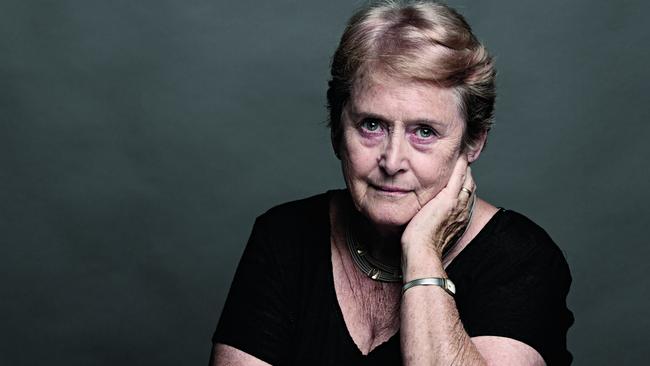
In her 2015 book Dear Life: On Caring For The Elderly, Melbourne physician Karen Hitchcock wrote, “In survey after survey, the vast majority of adults in Australia state that they wish to die at home.” And yet: “Only 14 per cent of people in Australia die at home: half die in hospital, 30 per cent in nursing homes.”
Hitchcock noted that the practicalities of caring for someone who is dying – “dealing with their piss and vomit, blood and shit, their needs for ever-greater doses of symptom-relieving medication” – often become too much for family members to attend to, if they are attempted at all. “You’re lucky if you can get a daily visit from a palliative care or district nurse,” Hitchcock wrote. “The maximum assistance you can get in Australia is an hour or two a day.”
The Huelsmanns can consider themselves among the lucky few, then, having opened up their front doors and their lives to a tight-knit group of professional in-home carers. As a result, they have met nurses such as Camille Doyle, who for 10 years has worked at the front line supporting the needs of terminally ill people. She simply loves this job, and sometimes remarks to her colleagues that she can’t believe she gets paid for it.
“A good palliative care nurse should be invisible,” she says, while navigating her hatchback between house visits. “You’re there to help them negotiate the process with friends and loved ones. The Dalai Lama says compassion should be selfless: it’s not about you, it’s about them. You’re a springboard. But it’s a real dance: you’re not a robot, and you go in with your whole self and heart open. We’re all emotionally involved, and the moment you’re not – when it becomes mechanical – I think you should quit.”
This role requires the nurses to draw on a deep reservoir of empathy. It is work powered by constant communication, and it can be emotionally exhausting. On arriving home in the afternoon, Camille likes to unwind by going on long walks with her dog, tending to her vegie garden and playing the fiddle. Her 18-year-old son cooks dinner for her, and always asks about her day. Sometimes, though, after particularly challenging interactions, she might choose to retreat into silence.
An early career mentor warned Camille to keep a close eye on her emotional state and to take regular breaks from work. For palliative care nurses, burnout – known in this field as “compassion fatigue” – is a risk. All that caring can wear a person down, inhibiting their ability to attend to the needs of others. Or as her mentor put it: You can’t give from an empty cup.
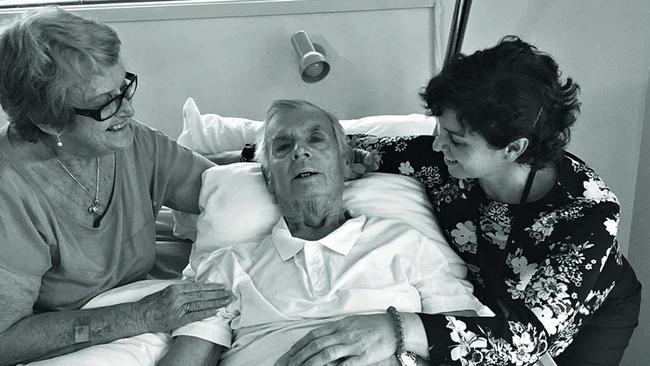
On Wednesday morning, Karuna’s spiritual carer stands atop a chair to remove the batteries from a ticking wall clock, before leading a group of 10 staff through a guided meditation. The women sit in a circle, eyes closed, while a ceiling fan chops the air above them. Clad in maroon and gold robes and sporting a shaved head, Venerable Tenzin Chodron urges the nurses to set their motivation. “Generate a sense of love and compassion for anyone you’ll interact with today,” says the Buddhist nun, between lengthy pauses. “Hope to eliminate suffering for clients and their families.”
Later that day, at the Huelsmanns’ dinner table beside a piano with the sheet music to the Rodgers & Hammerstein show tune Edelweiss on display, a tough conversation is taking place. Camille sits next to Sandra, while her daughter, Angela, leans against the back of the couch by her mother’s side. They discuss how Tony’s wounds are growing bigger and more painful each day, and lament the occurrence of another infection. The choice before them is whether to attempt to fight the infection with antibiotics, or whether another path might be more appropriate for him.
The long-time family GP arrives and listens to the family’s report on Tony’s condition. Sandra says he has occasional moments of lucidity – such as reading the newspaper this morning and being horrified by the Australian cricket team’s performance – but most of the time he is confused. Together, the Huelsmanns have long since resolved that when quality of life decreases, medical intervention to prolong life is neither kind nor courageous. “There’s not much quality of life there anymore, is there?” the doctor asks gently. “Are you guys ready to let go?”
“It’s probably better if we all had a pathway,” Sandra replies. “I don’t think [prescribing] antibiotics is the right thing to do.”
Camille nods. “I think you’re making the right decision,” she tells mother and daughter. “He’ll continue to deteriorate. It’s taking a toll on your health. It’s incredible you’ve kept him at home for so long; this would take a whole team at a hospital. It’s a good time to shift your palliative approach. The longer it goes on, the more it’ll strain you.”
The tough conversation continues in Tony’s bedroom. He listens, and understands that when the nurse installs a syringe driver, a mild cocktail of drugs for pain, muscle relaxation and nausea will be steadily delivered into his body. From that point, the contents of the cocktail will be refreshed every 24 hours until he dies.
“I can’t do any more,” says Tony, in a tone marked more by acceptance than sadness. The family GP, sitting on the bed, says: “I’m not speeding things up. I want you to go comfortably.” The old man replies, “That’s what I want. Let me shake your hand, mate.”
There is incredible power and grace in this moment, and in this simple gesture of goodwill between doctor and patient. The old man’s blue eyes gaze around the room; he’s dressed in white bedclothes, hair messy and cheeks flushed. His wife asks if he’s happy with this decision. He nods and says, “Yes.”
Sandra bends down to kiss his forehead, and for a few seconds, his muddled mind reverts to the performance role he once inhabited as a dancer. “OK, ladies and gentlemen,” he tells his audience. “I hope you have a good day.”
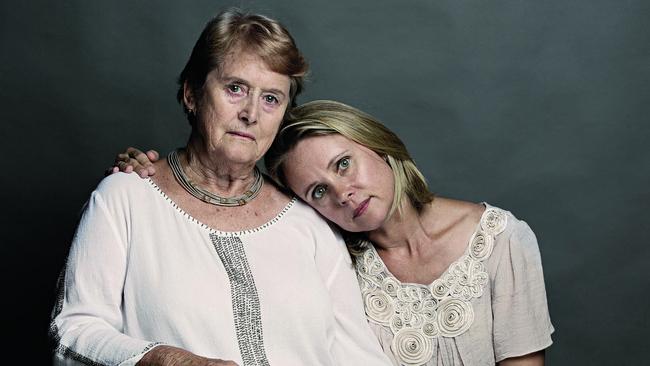
Twenty-four hours a day, every day of the year,a Karuna nurse is on call. When a client or their family member sends a message to a central pager service, the nurse will return their call within minutes. If the matter is deemed urgent, they’ll visit the home to provide whatever support is needed. This sort of around-the-clock care is a unique aspect of the service, whose overarching goal is to allow clients to fulfil their wish of dying where they choose. About 97 per cent of Karuna’s clients achieve this goal, whether that’s dying at home, or staying there until being transferred to a hospital or hospice for the “terminal” phase.
Karuna is not a wealthy organisation. It does extraordinary work with ordinary resources. Just over half its funding comes from state and federal governments, and the rest is from donations, bequests and fundraising. It is a specialist, in-demand service whose chief currency is caring and yet it is in a perpetually precarious financial position. Those who have experienced its services tend to become advocates, volunteers or cheerleaders for Karuna. Paperwork distributed to clients during the admission process notes that the average cost of care is $3000 per family. For the families themselves, however, costs are kept close to zero, except for the occasional request to help pay for particularly expensive medical supplies.
Although it was founded on Buddhist principles, not all of its staff subscribe to this faith; nor does Karuna require this of its clients. Camille has been interested in Buddhism for about 15 years, though, and her faith has only strengthened since joining Karuna in 2006. “It’s not about imposing our belief system onto people, it’s about strengthening what they believe in,” she explains, while driving back towards Samford Valley. “And not charging clients agrees with Karuna’s philosophy, too.”
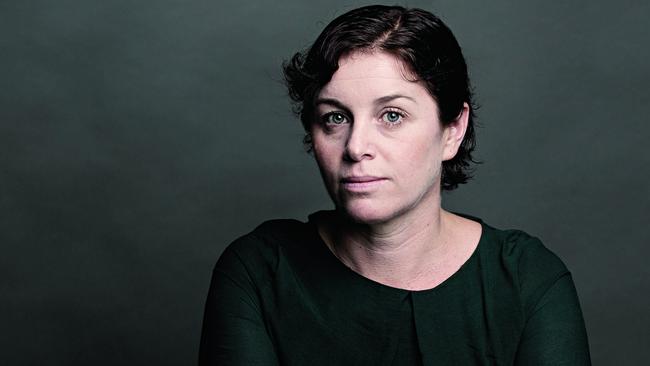
For some time now, the mattress in the Huelsmanns’ master bedroom has been vacant. Instead, Sandra rests in a single bed beside her husband. She doesn’t really sleep, as she is always listening for Tony coughing or choking mid-slumber. In a flash, she’ll flick on the light and attend to him. But there’s another reason she lies here every night, too: a curious combination of love and an unwavering desire to bear witness to every moment of her husband’s gradual decline. “After this journey,” says Sandra, “I don’t want to wake up one morning and miss the grand finale.”
On Thursday, the cocktail in the syringe driver has begun to take effect. Tony is more comfortable, but less coherent. When Camille visits the home in the afternoon, she quizzes him about the name of the prime minister. He isn’t sure, but he does correctly name the day of the week. “No birds today?” she asks, looking over her shoulder towards the garden. He shakes his head, and whispers to her, “I want to fly off.” With tenderness, she replies, “You’re not quite there yet. You’re in the departure lounge. There could be a bit of a wait.” When she raises the bed to check his dressings, he murmurs that he wishes Camille could “put him all the way up”, while gesturing skyward.
By midday Friday, Tony has lost more strength and lucidity. Swollen from the waist down, he has little control of his body. Today, for the first time, he is unable to use scissors to cut the tape that his wife uses to dress his sores. When Karuna nurse Kate Hooper visits his bedside, Tony clocks her prominent baby bump. A man near death meets a woman weeks away from giving birth. Pointing a shaky finger, he smiles and rasps to her, “How long to go?”
While two nurses help to make him comfortable, Sandra looks more shattered than ever; tired and seemingly on the brink of collapse, yet still resplendent in bright pants and an aqua striped top. The ever-growing pile of laundry will be dealt with later, like the dirty dishes accruing in the sink. When Hooper compliments her by suggesting that she’s doing marvellously, Sandra sighs and replies, “Sometimes it doesn’t feel like I am. I look at my house; everything gets pushed aside.”
At the dinner table, Hooper phones the family GP to provide an update. “His input now is quite poor. He looks pale today,” she tells the doctor. “There’s a definite change, and [Sandra] is starting to get distressed. There’s little support in the early hours of the morning.” With each passing hour, Tony’s palliative phase assessment edges further from “deteriorating” to “terminal”.
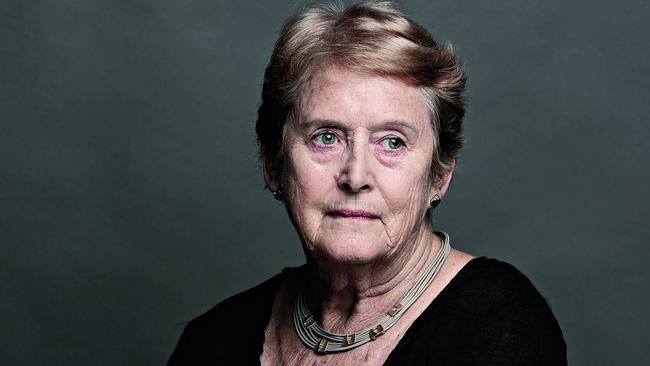
Four days later, on Tuesday afternoon, Sandra and Camille sit together on the back deck with cups of tea. Wheelchairs and walkers are gathered by the front door, awaiting collection. Inside, the bed that looks out past the bird feeder and into the garden is empty; at its foot sit boxes of unused medical supplies.
As per his wishes, Tony died at home on Saturday, November 19, 2016, in the company of his wife and family, just a few weeks short of his 50th wedding anniversary. During this bereavement visit, Sandra tells the nurse about how, after hours of minimal breathing, Tony took one final gasp and became still. Sandra paged Karuna’s on-call nurse at 6.36pm on Saturday to report that he was no longer breathing. This was more of a courtesy message than a distress signal, as it was clear she had witnessed the grand finale after all. She compares his final moments of life to “a winding down of the clock, like a pendulum getting slower and slower – but you don’t know which [swing] will be the final one”.
She tells the nurse how the family sat with his body for more than an hour. That night, after the GP had completed the death certificate and the funeral director had taken away his body, mother and daughter slept fitfully in the same bed for the first time in 25 years. “The next morning, I felt relieved, actually,” Sandra says. “That last week, I did not like seeing him like that. But I couldn’t have done anything without Karuna.” She has resolved that at Tony’s memorial service, she’ll ask for guests to give donations to the palliative care service in lieu of flowers.
After unravelling a detailed, chronological summary of the last days of her husband’s life across nearly an hour, Sandra suddenly looks at the nurse with eyes anew, as if seeing her for the first time. “This is not a job for you, is it?” she asks Camille. The nurse shakes her head and replies, “It’s too special to be just a job. It becomes your life.” Just before they farewell one another with a long hug, Camille furrows her brow and says, “Now, don’t go squirting the pain meds into your coffee.” The new widow howls with laughter.
At Karuna House earlier that morning, the team gathered for its weekly meeting. In the centre of the table sat a lit candle, a metallic bowl atop a small cushion, and a deck of prayer cards containing words of wisdom from the Dalai Lama. One was plucked from the top of the pile and read aloud: “Genuine happiness cannot be defined by material and sensual satisfactions, but only by mental and spiritual development that always acknowledges others and their needs.”
The staff noted that Tony was one of four clients who’d died in the past week. The organisation’s services to the Huelsmann family won’t end with his death. Now that Sandra and her daughter Angela have entered the final stage of the palliative phase assessment, their bereavement counselling will continue for a year – and then for as long as they feel that they need to speak to Karuna’s two psychologists.
Before the kind eyes of her co-workers, Camille reflected on Tony’s memory. “He was incredible,” she said quietly. Together, they remarked on Sandra’s strength and dedication to see him through that final journey. For Camille and her colleagues, caring for Tony Huelsmann during the last six months of his life was a job well done, a wish fulfilled: he was able to achieve his goal of dying in an environment of his choosing. Now, their compassion and empathy must find a new home in the next client, and the one after that.
The meeting ended with Camille leaning forward to blow out the candle. Once the smoke dissipated, a bell was rung, and the nurses stayed silent while the bright tone rang out. In trees nearby, they heard rainbow lorikeets making a hell of a racket; a little circus happening outside the window.



